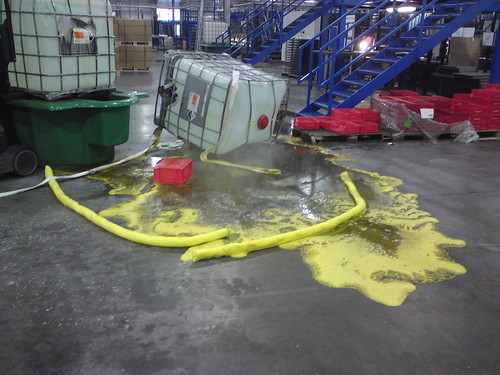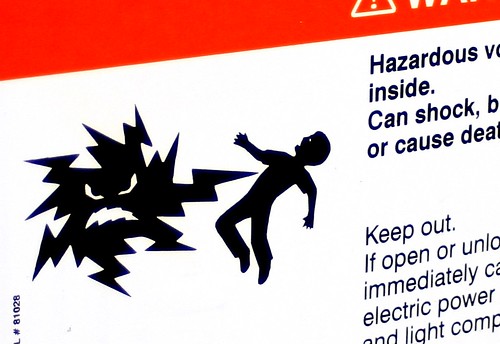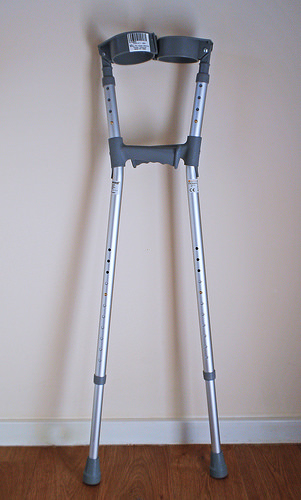Since President Trump took office, I’ve written in this space a number of times describing specific executive and regulatory initiatives to freeze or reverse environmental regulations. They’ve largely conformed with the President’s antipathy for such regulations, and his appointees’ vigor. Environmental and health advocates have challenged all these changes, continuing to yield court decisions confirming the limits of executive and administrative authority to impose changes (In January 2017 I summarized the limits on various approaches here).
Read MoreAudit, Compliance and Risk Blog
Status of Trump Administration Environmental Regulatory Rollbacks
Posted by Jon Elliott on Tue, Jul 02, 2019
Tags: Health & Safety, Environmental risks, Environmental, EPA, Oil & Gas, clean water
It’s Time To Submit Annual Toxic Release Inventory Reports
Posted by Jon Elliott on Thu, Jun 27, 2019
Section 313 of the Emergency Planning and Community Right-To-Know Act of 1986 (EPCRA, also referred to as SARA Title III) requires selected facilities to file toxic chemical release inventory reports with EPA and their state, on one of two forms (Form R or Form A). This program is often referred to as the Toxics Release Inventory (TRI) program. Filings are due every July 1, so facilities that know or suspect they’re covered should be preparing their annual submissions. The remainder of this blog summarizes TRI requirements.
Read MoreTags: Business & Legal, Health & Safety, Environmental risks, Environmental, EPA, Hazcom
International controls on shipments of plastic waste will increase effective January 1, 2021. Parties to the 1989 Basel Convention on the Control of Transboundary Movements of Hazardous Wastes and their Disposal (Basel Convention) have just adopted amendments to add “plastic waste” to the materials governed by the Convention. The European Union and 186 nations are parties to the Basel Convention; President George Bush signed it on behalf of the United States in 1989, but in the ensuing three decades the U.S. Senate has not yet ratified it. However, the U.S. is subject to requirements adopted by the Organization for Economic Cooperation and Development (OECD), which reflect Basel Convention requirements. Besides, most countries that might receive exports are Basel Convention signatories and should enforce its terms.
Read MoreTags: Business & Legal, Health & Safety, Environmental risks, Environmental, EPA, Hazcom
Among its many workplace health and safety standards, the Occupational Safety and Health Administration (OSHA) requires employers to protect employees during equipment servicing and maintenance, to prevent “unexpected” equipment energization, start up, or release of stored energy. OSHA’s Control of Hazardous Energy Standard—more often called the Lockout/Tagout or “LOTO” Standard after its primary compliance requirements—requires employers to establish and implement safety procedures to control such hazardous energy. The LOTO Standard has changed very little since OSHA adopted it in 1989, but the agency has just published a formal request for information – public comments – about two changes in workplace equipment over the past 30 years that might affect energy hazards and justify revisions to the LOTO Standard. The rest of this note summarizes existing requirements and discussed OSHA’s review of control circuits and workplace robotics.
Read MoreTags: Business & Legal, Employer Best Practices, Health & Safety, OSHA, Employee Rights, Hazcom
The Resource Conservation and Recovery Act (RCRA) assigns the US Environmental Protection Agency (EPA) to define and then regulate “hazardous wastes.” EPA applies its considerable discretion to separate hazardous wastes into categories subject to distinct waste management requirements. One basis for these categorizations is relative risk – the more hazardous the waste the greater the controls required, and the smaller the threshold quantities necessary to trigger regulation. Beginning in 1995, EPA has defined a limited set of very common lower-risk wastes as “universal wastes,” and made them subject to special rules intended to encourage recycling (40 CFR part 273). The rest of this note summarizes universal waste requirements.
Read MoreTags: Health & Safety, Environmental risks, Environmental, EPA, Hazcom, RCRA
Occupational Safety and Health Review Commission Confirms Employer’s General Duty Clause Applies to Workplace Violence
Posted by Jon Elliott on Tue, May 14, 2019
On March 4, 2019, the U.S. Occupational Safety and Health Review Commission (Commission) issued its first affirmation of a citation and penalty issued by the Occupational Safety and Health Administration (OSHA) to punish a health care provider under the Employer’s General Duty Clause for failing to take adequate steps to prevent workplace violence. OSHA has issued citations under this Clause since 2012, but this is the first time that the Commission has confirmed one of these citations on appeal.
Read MoreTags: Business & Legal, Employer Best Practices, Health & Safety, OSHA, Employee Rights, Workplace violence
EPA Requiring Notice and Review Before Lapsed Uses of Asbestos Can Be Reintroduced
Posted by Jon Elliott on Tue, May 07, 2019
The Environmental Protection Agency (EPA) is continuing its renewed reviews of asbestos products, and has just issued a requirement that “discontinued” uses receive new review and approval before they can re-enter commerce in the United States. Formally, EPA has issued a Significant New Use Rule (SNUR) covering these products (I wrote about the SNUR proposal here).
Read MoreTags: Health & Safety, Environmental risks, Environmental, EPA
After a long rulemaking, the US Environmental Protection Agency (EPA) has just promulgated rules defining certain waste pharmaceuticals as “hazardous wastes” under the Resource Conservation and Recovery Act (RCRA), and establishing standards for their management by selected healthcare and “reverse distribution” waste management facilities. These regulations replace general RCRA generator and treatment requirements otherwise applicable to hazardous wastes.
Read MoreTags: Health & Safety, EPA, Hazcom, RCRA, pharmaceuticals
Even if the latest polar vortex has ended by the time you read this, employers in most parts of the continent should be worrying about protecting workers against winter weather. Occupational safety and health regulators include “environmental” hazards as those that may require employers to provide their employees with personal protective equipment (PPE), and employers also bear a “general duty” to protect workers against recognized hazards. These requirements cover potential harm from extreme temperatures including cold, as well as slippery surfaces and other hazards from frozen and melting snow or other precipitation.
Read MoreTags: Employer Best Practices, Health & Safety, OSHA, Employee Rights, climate change
Is Your Workplace Injury and Illness Log Ready for Compliance with OSHA Requirements?
Posted by Jon Elliott on Thu, Jan 31, 2019
The Occupational Safety and Health Administration (OSHA) requires employers to prepare and maintain records of occupational injuries and illnesses (I&I Logs) as they occur. OSHA also requires employers to post an annual I&I Summary in each “establishment” within their workplace by February 1, summarizing that workplace’s I&Is during the previous calendar year. In states that administer federal standards within state-run programs, employers follow the comparable state requirements. Establishments with 250 or more workers must file electronic summaries by March 2.
Read MoreTags: Business & Legal, Health & Safety, OSHA, Workplace violence










